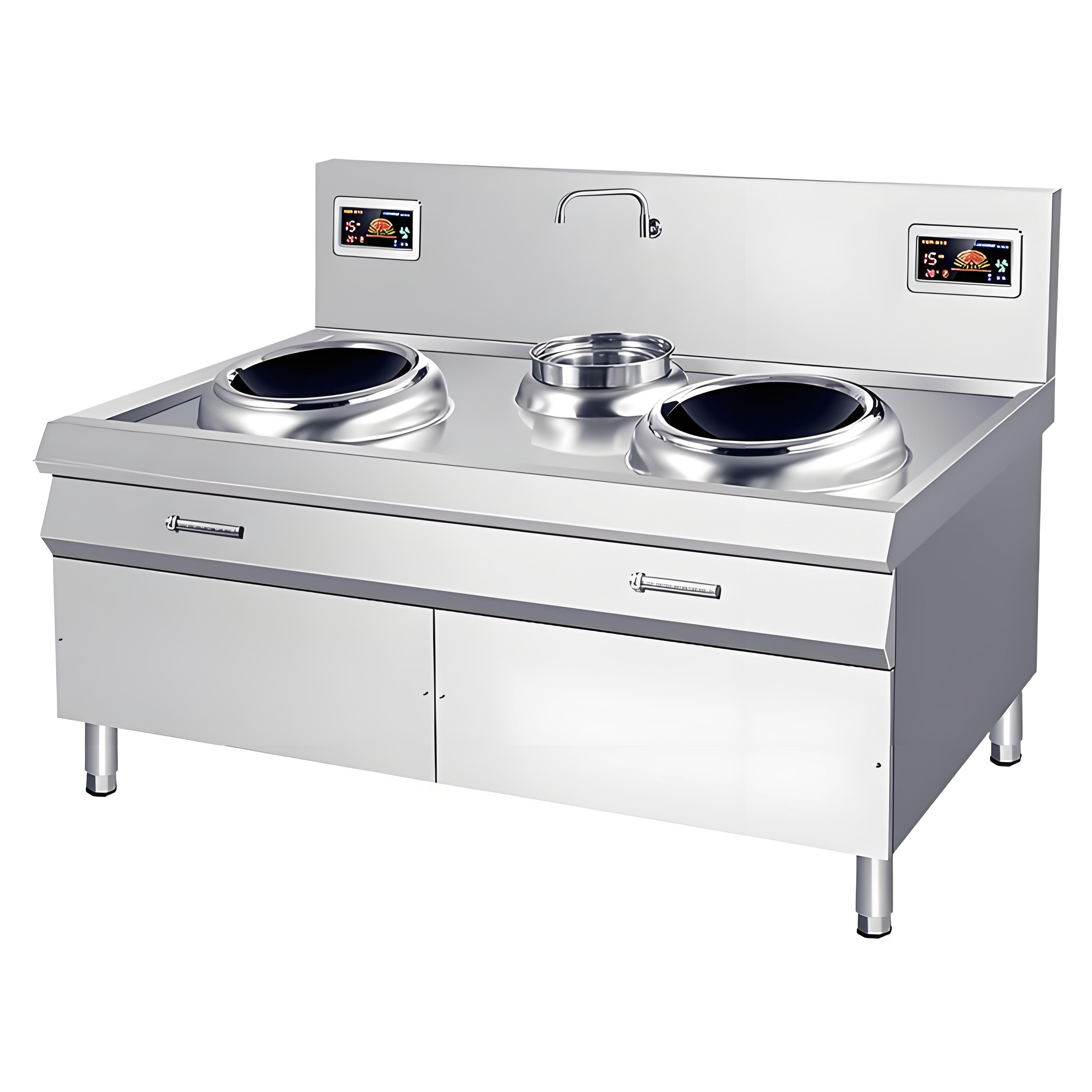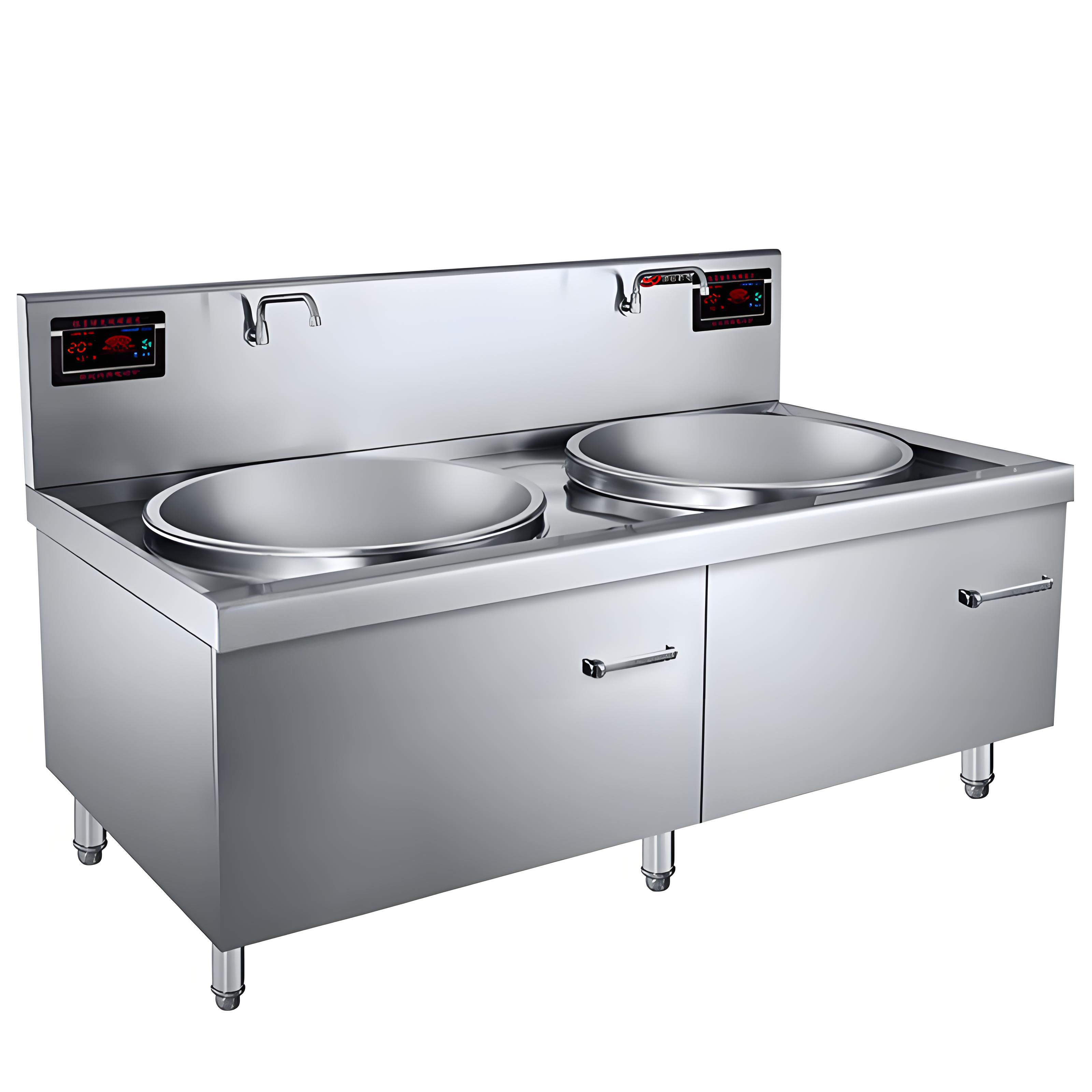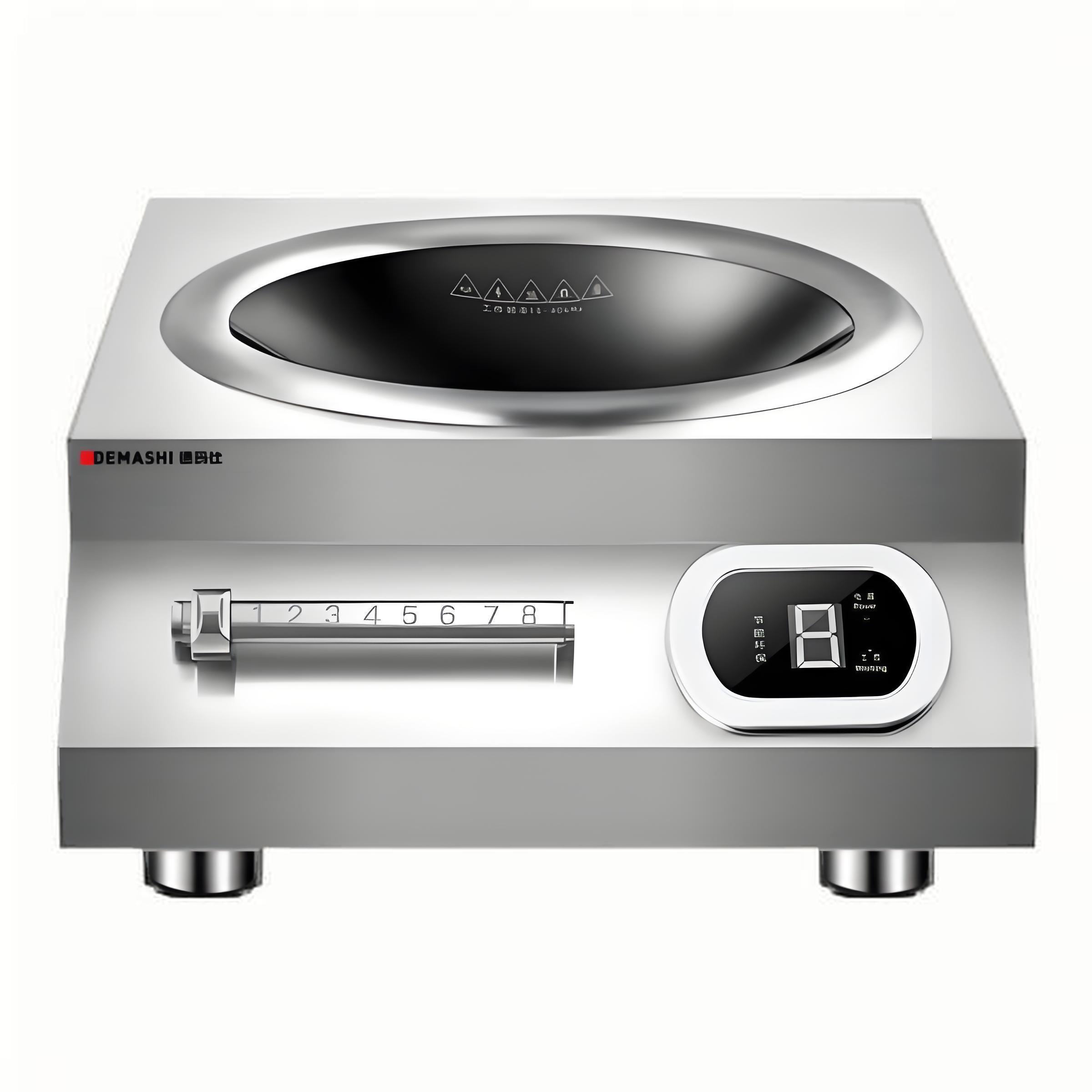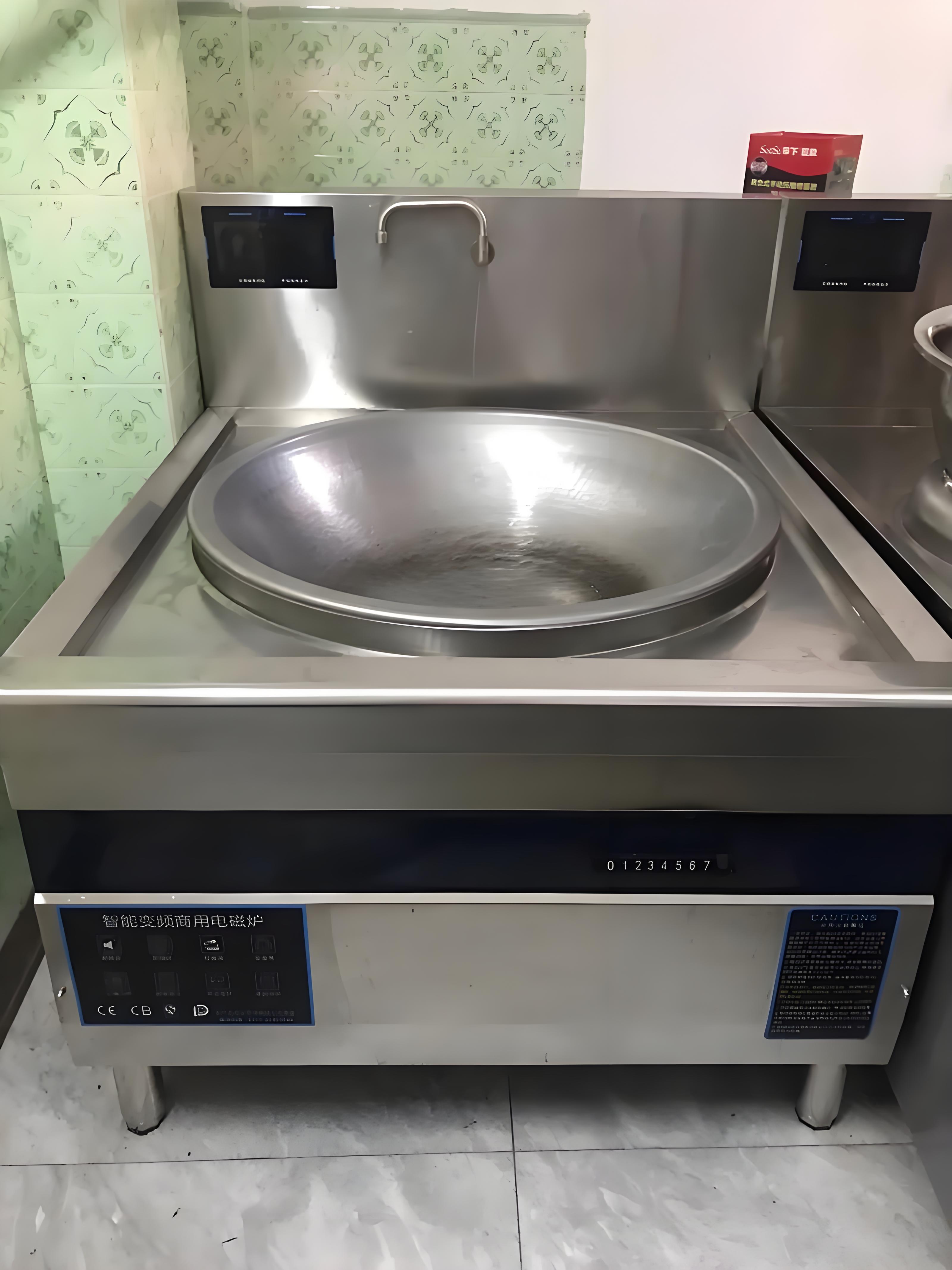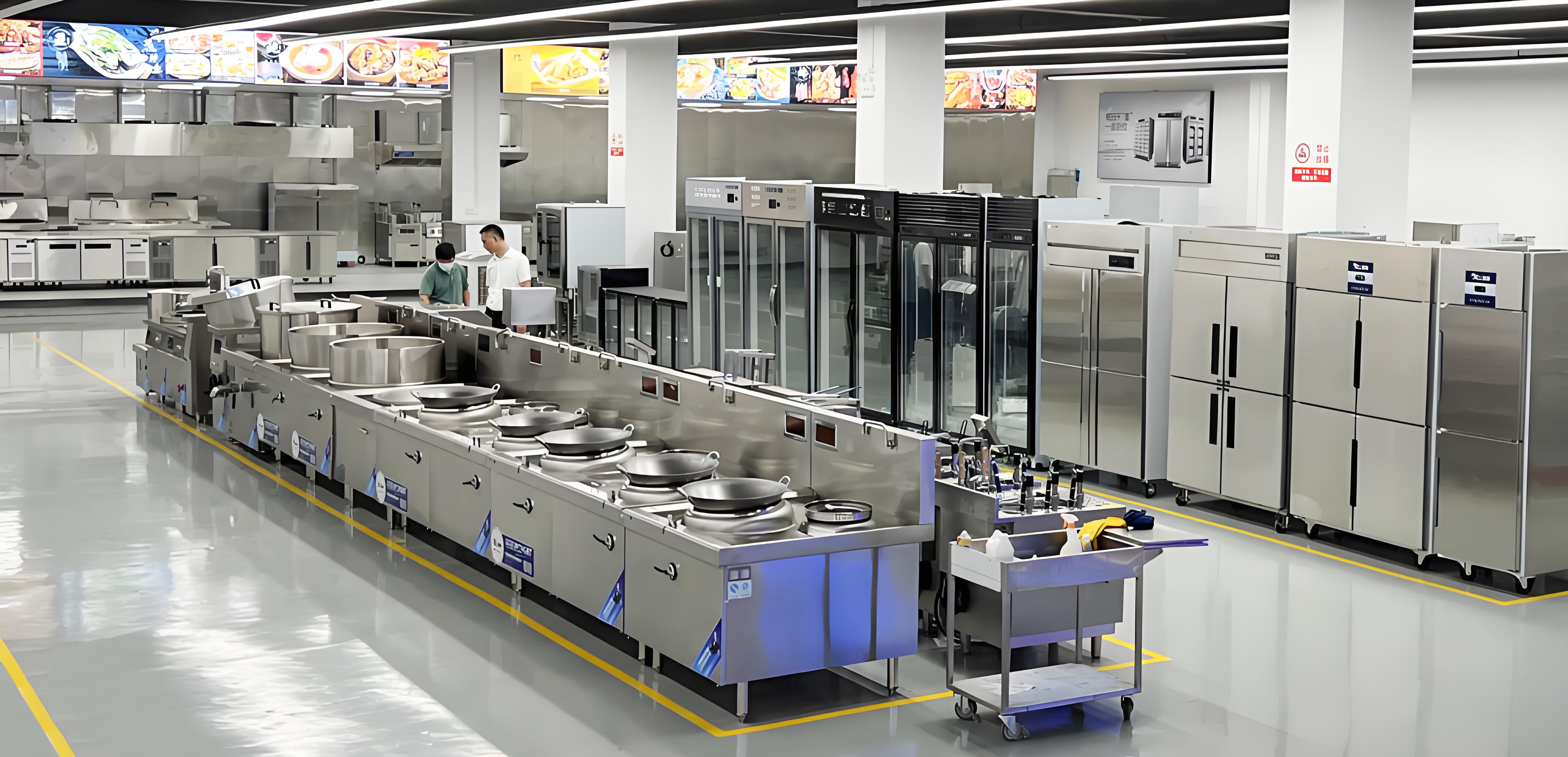Having spent years in the commercial kitchen equipment industry, I know that restaurant owners, when choosing an induction cooker, are just as concerned about energy efficiency as they are about performance. Electricity costs can take a significant chunk out of a restaurant’s operating budget, especially in high-traffic kitchens. Selecting an energy-efficient commercial induction cooker not only reduces long-term expenses but also boosts kitchen productivity. In this article, I’ll draw on real-world cases and industry expertise to explain how to choose an energy-efficient induction cooker for restaurant kitchens, helping you find the perfect balance of performance and savings.
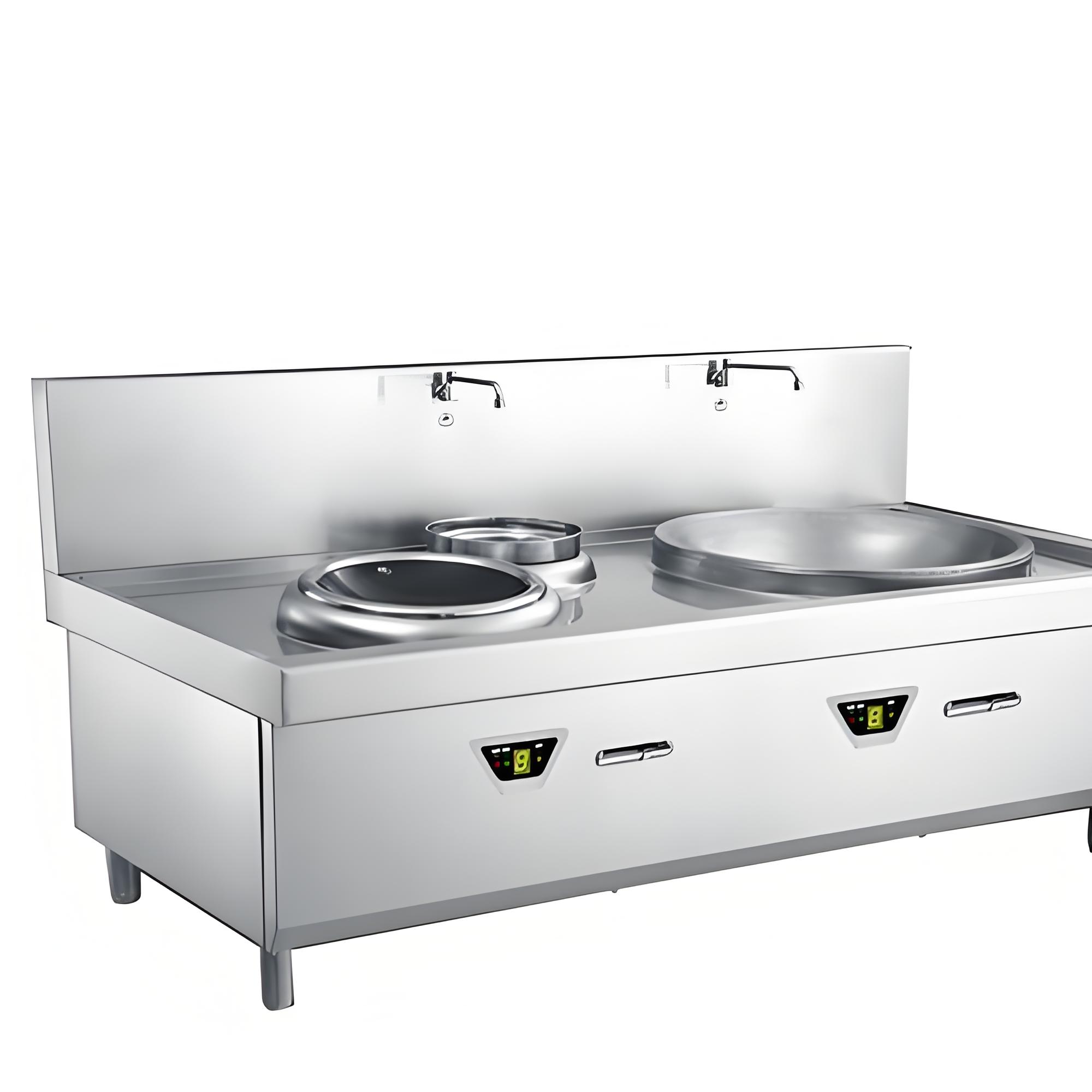
Why Energy Efficiency Matters in Commercial Kitchens
The electricity consumption of a commercial induction cooker directly impacts a restaurant’s bottom line. For instance, a 15 kW induction cooker running 8 hours a day at $0.15 per kWh racks up about $540 in monthly electricity costs (15 kW × 8 hours × 30 days × $0.15). In kitchens with multiple units, these costs can skyrocket. Choosing an energy-efficient commercial induction cooker not only eases financial strain but also aligns with eco-friendly practices.
However, saving energy doesn’t mean compromising on performance. Restaurant kitchens need to balance fast service with cost control, so the selection process involves evaluating equipment technology, power compatibility, and usage habits. Below, I’ll break down these factors to guide you toward the most energy-efficient choice.
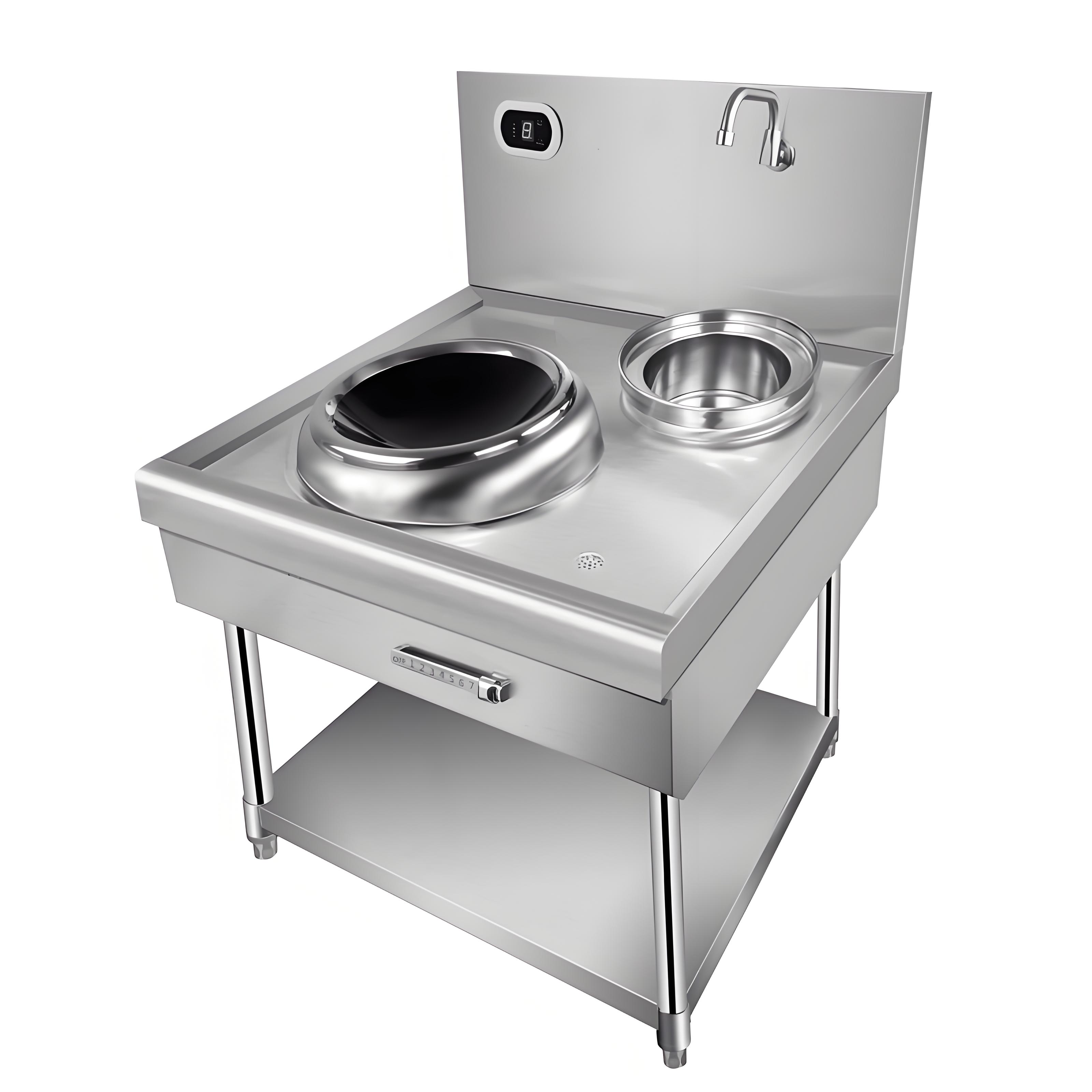
Key Factors Affecting Induction Cooker Energy Consumption
To pick an energy-efficient commercial induction cooker, you first need to understand the main factors influencing power usage:
Power Compatibility: Overpowered cookers waste energy during low-demand tasks, while underpowered ones may require prolonged heating, increasing consumption.
Technology Features: Features like smart temperature control or energy-saving modes directly impact efficiency.
Usage Habits: How chefs operate the cooker and maintain it affects energy consumption.
Electrical Environment: Mismatched or outdated wiring can lead to energy loss, adding hidden costs.
To help you compare options, I’ve created a table summarizing different types of induction cookers, their energy-saving features, and ideal applications:
| Cooker Type | Energy-Saving Features | Applicable Scenarios | Energy Consumption Notes |
|---|---|---|---|
| Smart Temp Control | Auto-adjusts power based on temperature | Mid-to-large restaurants, chain dining | Reduces idle power usage, highly efficient |
| Multi-Power Level | Manual high/low power switching | Small restaurants, fast food outlets | Flexible for varying cooking needs, avoids high-power waste |
| High-Efficiency IGBT | High-frequency inverter, high energy conversion | Hotel kitchens, banquet halls | Up to 90%+ energy efficiency |
| Traditional Fixed Power | No smart adjustments, fixed output | Temporary or low-frequency use | Higher consumption, suits low budgets |
How to Choose an Energy-Efficient Commercial Induction Cooker?
1. Select the Right Power for Your Kitchen’s Needs
Choosing the correct power rating is the first step to energy efficiency. Overpowered cookers waste electricity, while underpowered ones extend cooking times, indirectly increasing consumption. Here’s how to match power to kitchen size:
Small Kitchens (Daily Customer Flow < 100):
Opt for 3.5 kW to 8 kW cookers, ideal for fast food outlets or cafés focusing on boiling, frying, or steaming. These kitchens typically use single-phase power with limited electrical capacity. Choosing a cooker with smart power adjustment allows dynamic power scaling, reducing idle consumption.
Case Study: I helped a small noodle shop with a daily customer flow of about 80, serving soups and braised dishes. We installed a 5 kW smart temp control cooker. Six months later, the owner reported a 20% reduction in electricity costs compared to their old equipment, as the cooker automatically lowered power to maintain soup temperature.
Mid-Sized Kitchens (Daily Customer Flow 100-300):
Choose 8 kW to 15 kW cookers, suitable for chain restaurants or Chinese eateries. These kitchens need versatility for stir-frying and sustained heating. Multi-power level or smart temp control cookers are ideal for reducing energy waste.
Case Study: A Sichuan restaurant consulted me about high electricity bills from their 12 kW fixed-power cookers. We switched to a 12 kW smart temp control model, which adjusted power based on pot temperature. Electricity costs dropped by 15%, and service speed remained unaffected.
Large Kitchens (Daily Customer Flow > 300):
Select 15 kW to 25 kW cookers for hotel kitchens or banquet halls. These require high heat output but benefit from high-efficiency IGBT models to maximize energy use.
Case Study: I equipped a five-star hotel’s banquet hall with three 20 kW high-efficiency IGBT cookers, achieving 92% energy conversion efficiency (per State Grid Corporation of China standards). After six months, the hotel reported 10% lower electricity costs than expected, with excellent heat dissipation extending equipment life.

2. Prioritize Energy-Saving Technologies
Modern commercial induction cookers boast advanced features that enhance efficiency. Here are key technologies to look for:
Smart Temperature Control: Sensors monitor pot temperature and adjust power automatically, preventing overheating or idle running. For example, during soup simmering, the cooker reduces power once the target temperature is reached, saving energy.
High-Efficiency IGBT Modules: Insulated Gate Bipolar Transistor (IGBT) technology boosts energy conversion to over 90%, saving 10%-15% compared to traditional modules.
Multi-Power Level Adjustment: Allows chefs to switch between high and low power for tasks like slow simmering or quick stir-frying, minimizing waste.
Energy-Saving Mode: Some high-end cookers reduce standby power during non-peak hours.
Selection Tip: Check the cooker’s specs and prioritize models with Level 1 Energy Efficiency ratings (per China Energy Label), as these typically incorporate cutting-edge energy-saving tech.
3. Optimize Usage Habits
Even the most efficient cooker won’t save energy if used improperly. Here are practical tips to maximize savings:
Plan Cooking Processes: Avoid prolonged idle running by turning off the cooker or switching to low-power standby when not in use.
Use Compatible Cookware: Opt for flat-bottomed, ferrous cookware to maximize electromagnetic induction efficiency. Mismatched or uneven pots increase energy loss.
Regular Cleaning: Oil or grease buildup on the cooker’s surface or coils can impair heat dissipation, wasting energy. Clean the surface and vents weekly.
Time-Segmented Use: Use high power during peak hours and switch to low power or turn off units during slower periods.
Case Study: I worked with a hotpot restaurant that kept all cookers running at full power all day, resulting in sky-high bills. I recommended shutting off some units during non-peak hours and training chefs to use energy-saving modes. Three months later, electricity costs dropped by 25%, and the owner jokingly said, “The savings could buy another cooker!”
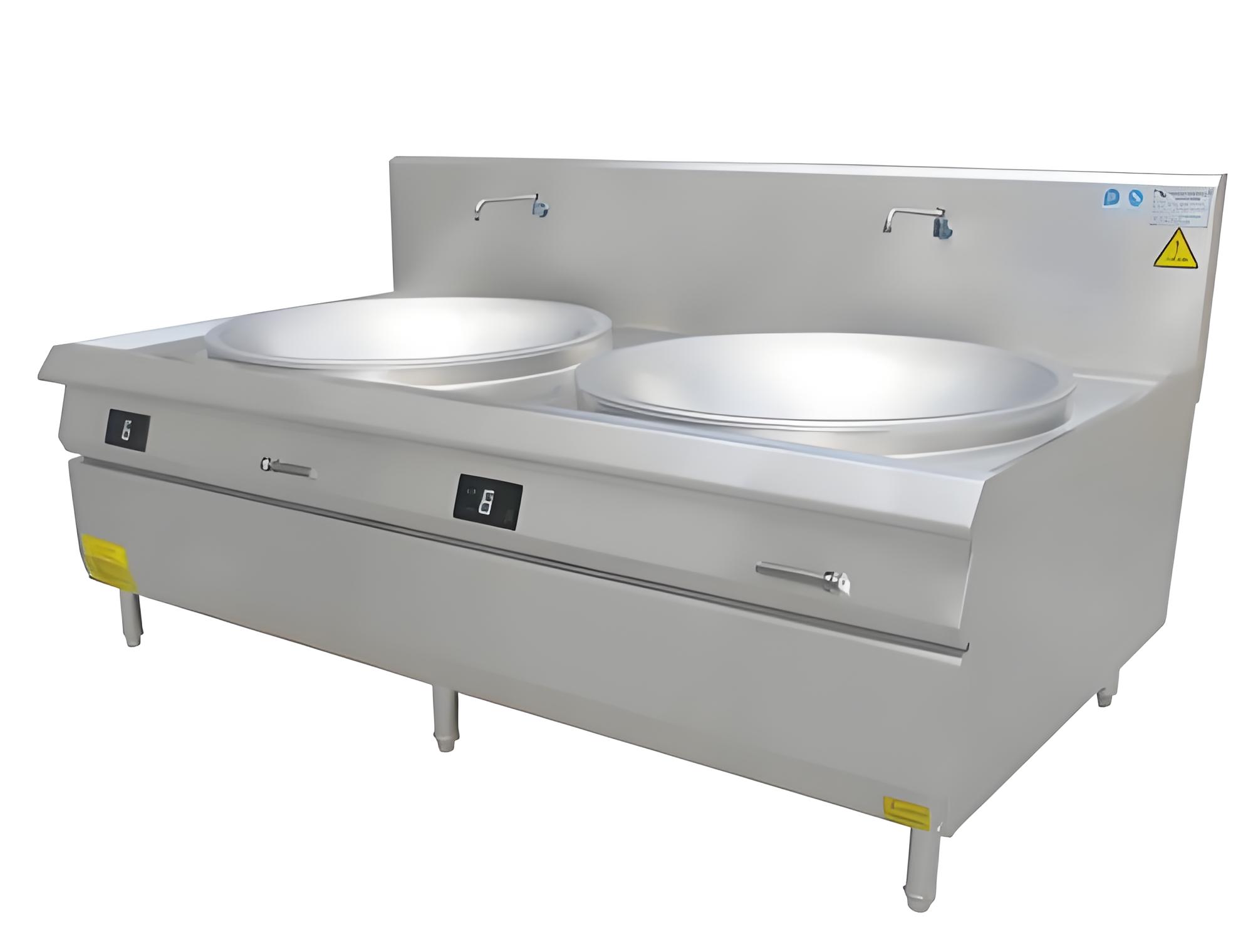
4. Ensure a Suitable Electrical Environment
The kitchen’s electrical setup impacts energy efficiency. Outdated wiring or insufficient capacity can lead to energy loss or safety risks. Consider these tips:
Single-Phase vs. Three-Phase Power: Small kitchens typically use single-phase power for 3.5 kW to 8 kW cookers, while mid-to-large kitchens require three-phase for higher wattages.
Optimize Wiring: Low-resistance wiring reduces energy loss. Have an electrician inspect and replace outdated lines if needed.
Distribution Panel Capacity: Per State Grid Corporation of China, commercial kitchens should maintain a 20% capacity buffer to handle peak loads efficiently.
Case Study: A mid-sized restaurant faced high energy consumption due to aging wiring. After replacing old lines and upgrading the distribution panel, energy usage dropped by 10%, and frequent breaker trips were eliminated.
Energy Efficiency Comparison of Different Cooker Types
To illustrate the energy-saving potential of various induction cookers, I’ve compiled a comparison table based on industry standards and my project experience:
| Cooker Type | Average Energy Efficiency | Monthly Cost (15 kW, 8 hr/day) | Recommended Scenarios |
|---|---|---|---|
| Smart Temp Control | 90%-95% | ~$486 (at $0.15/kWh) | Mid-to-large restaurants, precise temp needs |
| Multi-Power Level | 85%-90% | ~$513 | Small restaurants, budget-conscious |
| High-Efficiency IGBT | 92%-95% | ~$472 | Hotel kitchens, high-frequency use |
| Traditional Fixed Power | 80%-85% | ~$540 | Temporary kitchens, low-frequency use |
As the table shows, high-efficiency IGBT and smart temp control cookers offer the highest energy efficiency, significantly reducing costs in high-use settings. While IGBT models may have a higher upfront cost, their savings shine in demanding environments.
Avoiding Common Selection Mistakes
From my experience helping restaurants choose induction cookers, here are pitfalls that can undermine energy efficiency:
Focusing Only on Power: Assuming higher wattage means better performance, leading to excessive idle consumption.
Solution: Prioritize cookers with smart temp control or high-efficiency IGBT technology.
Ignoring Cookware Compatibility: Using unsuitable pots reduces induction efficiency, wasting energy.
Solution: Choose flat-bottomed, ferrous cookware that fully contacts the heating surface.
Neglecting Maintenance Costs: Cheap cookers with poor heat dissipation or low-quality coils consume more energy over time.
Solution: Select cookers with CCC certification or ISO9001 certification for quality and efficiency.
Overlooking After-Sales Service: Energy-efficient cookers require regular maintenance to sustain performance.
Solution: Choose suppliers with robust after-sales support and clear maintenance agreements.
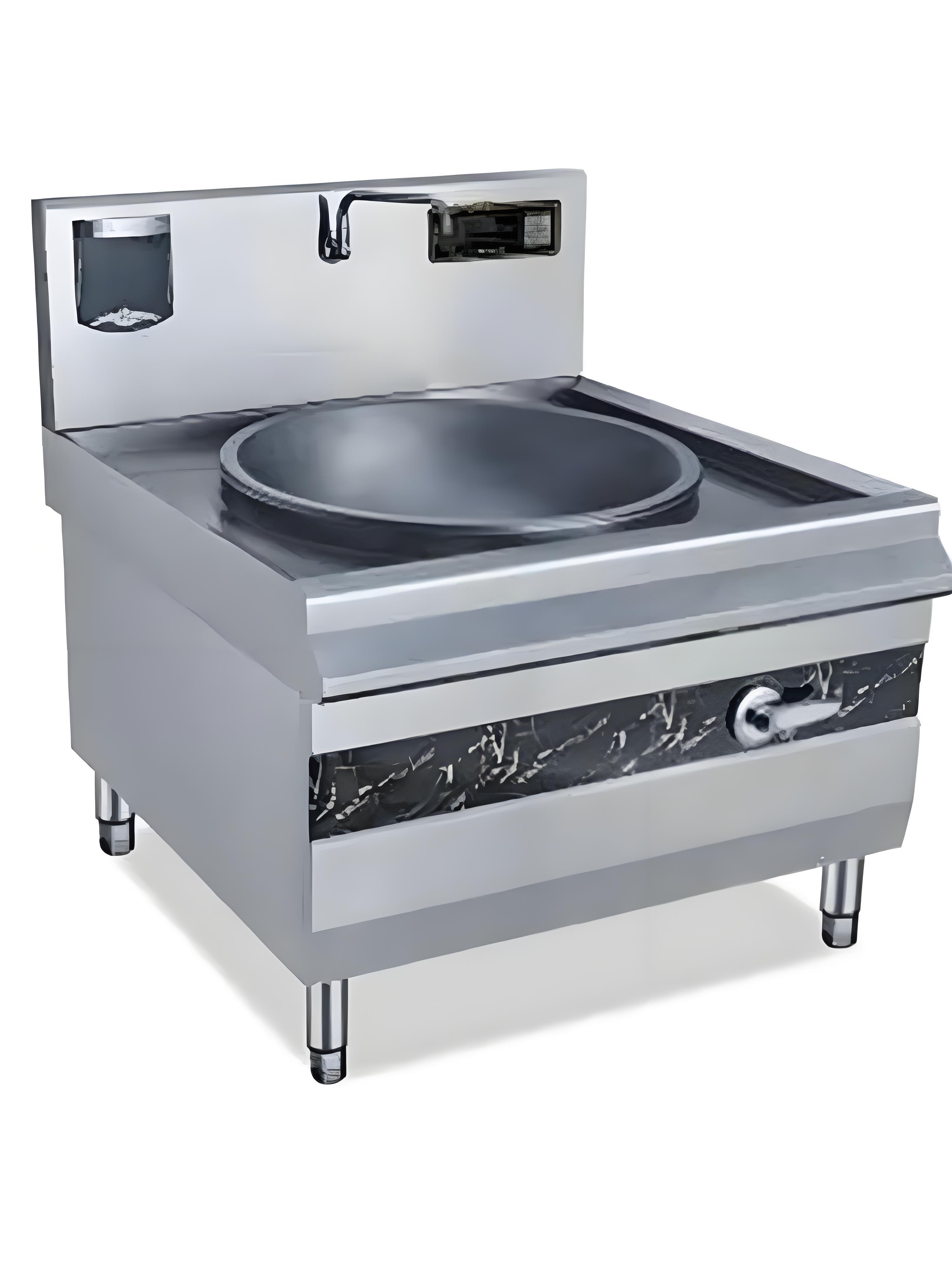
Real-World Case: From High Consumption to Energy Savings
Two years ago, a chain restaurant approached me about their $3,000 monthly electricity bills from multiple 12 kW fixed-power induction cookers. After a site visit, I found the cookers lacked smart adjustments, and chefs ran them at full power all day. I recommended switching to 12 kW smart temp control cookers and optimizing workflows, like using low-power modes during off-peak hours. Three months later, electricity costs dropped by 30%, and the owner exclaimed, “We finally got the right equipment!”
This experience highlights that energy savings come from both the right equipment and smart usage. I hope you can learn from this to avoid similar waste.
Conclusion: How to Pick an Energy-Efficient Induction Cooker?
To choose an energy-efficient commercial induction cooker, focus on these key steps:
Match Power to Needs: Select the right wattage for your kitchen size and cuisine to avoid over- or underpowered units.
Prioritize Energy-Saving Tech: Opt for smart temp control, high-efficiency IGBT, or multi-power level cookers.
Optimize Usage: Plan workflows, use compatible cookware, and maintain the cooker regularly.
Check Electrical Setup: Ensure wiring and panel capacity support efficient operation.
Choosing the right induction cooker can significantly cut electricity costs while boosting kitchen efficiency, making your restaurant operations smoother and more cost-effective. If you’re unsure about specific models or setups, consult a professional supplier or electrician for tailored recommendations.
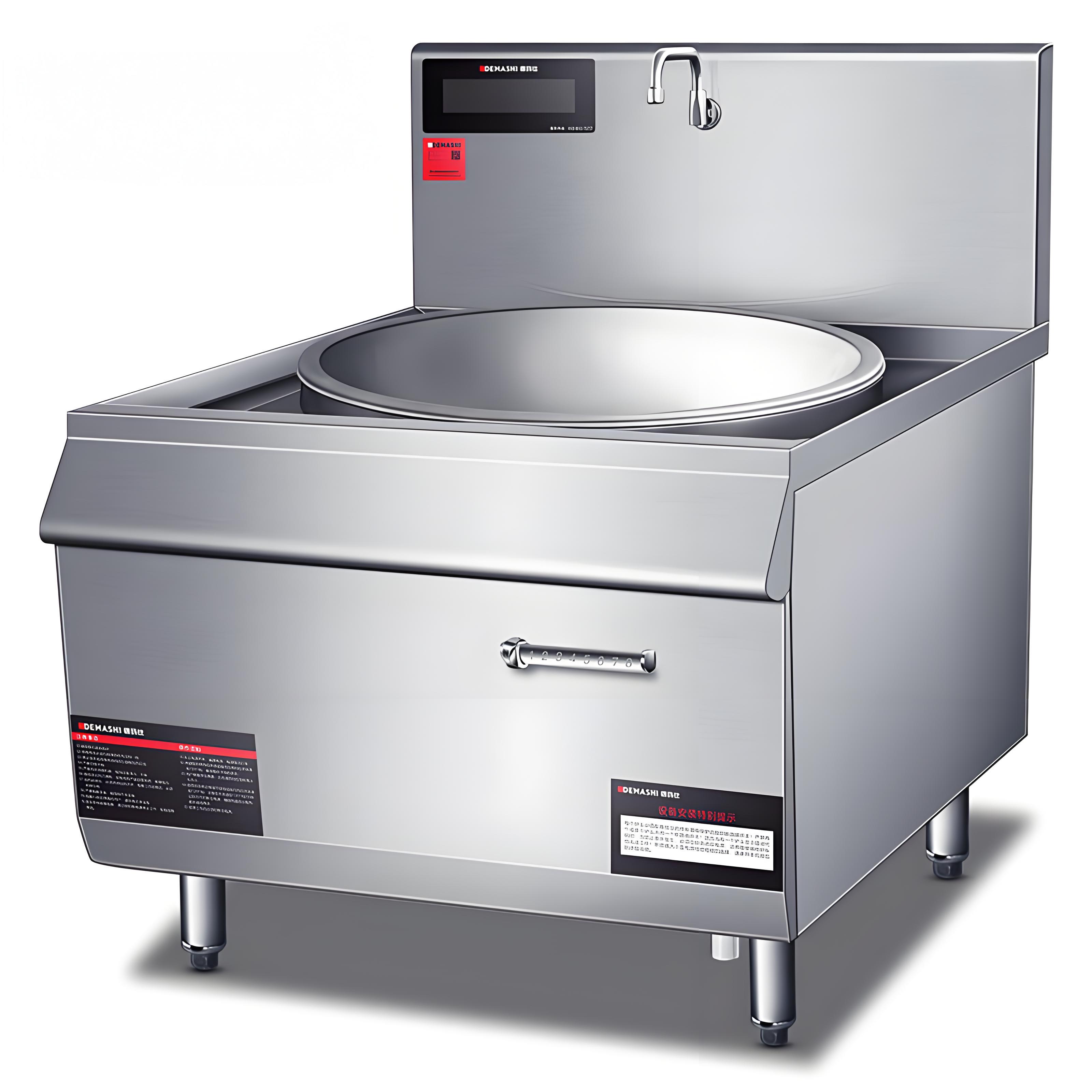
Related Q&A
Q1: Are commercial induction cookers more energy-efficient than gas stoves?
A: Induction cookers achieve over 90% energy efficiency, compared to 40%-60% for gas stoves (per China Energy Label). They’re generally more efficient long-term, provided power and usage are optimized.
Q2: Do smart temp control cookers really save energy?
A: Yes, they adjust power based on pot temperature, preventing overheating or idle running, typically saving 10%-20% on electricity.
Q3: How can I evaluate an induction cooker’s energy efficiency?
A: Check for Level 1 Energy Efficiency ratings and features like smart temp control or IGBT tech. Ask suppliers for energy consumption test data.
Q4: Which energy-efficient cooker suits small restaurants?
A: A 3.5 kW to 8 kW multi-power level or smart temp control cooker balances performance and cost for small kitchens.
Q5: What maintenance keeps induction cookers energy-efficient?
A: Clean the surface and vents weekly, inspect coils and panels every 3-6 months, and schedule professional maintenance to ensure optimal performance.
I hope this guide helps you find an energy-efficient commercial induction cooker! Feel free to reach out with any further questions!
